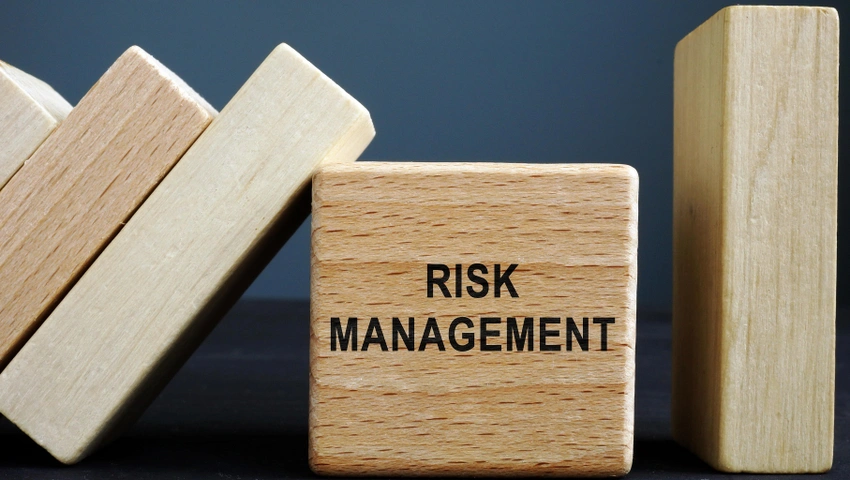
Risk management is a critical component for the success and sustainability of professional service providers. Whether in legal, consulting, accounting, IT, or any other professional service industry, understanding and mitigating risks can help protect your business, reputation, and clients. This comprehensive blog will delve into the importance of risk management for professional service providers, identify common risks, and outline practical strategies to manage these risks. By adopting these strategies, professional service providers can enhance their resilience and ensure long-term success.
Understanding Risk Management in Professional Services
What is Risk Management?
Risk management involves identifying, assessing, and prioritizing risks, followed by coordinated efforts to minimize, monitor, and control the probability or impact of unfortunate events. For professional service providers, effective risk management ensures that the firm can achieve its objectives despite uncertainties.
Importance of Risk Management
- Protecting Reputation: Reputation is crucial for professional service providers. Effective risk management helps safeguard the firm’s reputation by preventing incidents that could lead to reputational damage.
- Ensuring Compliance: Adhering to legal and regulatory requirements is crucial. Risk management ensures the firm complies with all relevant laws and regulations, avoiding penalties and legal issues.
- Client Trust: Clients trust professional service providers with sensitive information and critical tasks. Proper risk management reassures clients that their interests are protected.
- Financial Stability: Unmanaged risks can lead to significant financial losses. Effective risk management helps maintain a firm’s financial stability.
Types of Risks in Professional Services
- Operational Risks: These include internal processes, systems, and people risks. Examples are IT failures, data breaches, and human errors.
- Compliance Risks: Noncompliance with laws, regulations, and industry standards.
- Financial Risks: These include risks related to financial transactions, such as fraud, financial mismanagement, and economic downturns.
- Strategic Risks: Risks related to business decisions, such as market changes, competitive pressures, and poor strategic planning.
- Reputational Risks: Risks that could damage the firm’s reputation, such as negative publicity, client dissatisfaction, and ethical breaches.
Identifying and Assessing Risks
Risk Identification
- Internal Audits: Conduct regular internal audits to identify potential operational risks.
- Consultation with Staff: Engage with employees across different levels to gather insights on potential risks.
- Client Feedback: Regularly seek feedback from clients to identify areas of concern.
- Industry Analysis: Stay updated on industry trends and regulatory changes that could introduce new risks.
Risk Assessment
- Risk Likelihood: Assess the probability of each identified risk occurring.
- Risk Impact: Evaluate the potential impact of each risk on the firm’s operations, reputation, and financial health.
- Risk Prioritization: Prioritize risks based on their likelihood and impact to focus on the most critical areas.
Developing Risk Management Strategies
Risk Avoidance
- Policy Implementation: Develop and implement policies and procedures to avoid risks. For instance, strict data protection protocols should be established to avoid data breaches.
- Strategic Planning: Conduct thorough strategic planning to avoid decisions that could expose the firm to significant risks.
Risk Reduction
- Training and Education: Regularly train employees on risk management practices and compliance with policies and procedures.
- Technology Upgrades: Invest in advanced technologies to reduce operational risks, such as implementing robust cybersecurity measures.
- Process Improvement: Continuously improve internal processes to enhance efficiency and reduce the likelihood of errors.
Risk Transfer
- Insurance: Purchase appropriate insurance policies to transfer risks. Common insurance types for professional service providers include professional liability insurance, cyber liability insurance, and general liability insurance.
- Contracts and Agreements: Use well-drafted contracts to transfer risks to clients or third parties. For example, include indemnity clauses in client agreements.
Risk Acceptance
- Contingency Planning: Develop contingency plans for risks that cannot be avoided, reduced, or transferred. Ensure that the firm is prepared to respond effectively if these risks materialize.
- Risk Tolerance: Determine the level of risk the firm is willing to accept in pursuit of its objectives. Ensure that this risk tolerance is communicated clearly to all employees.
Implementing Risk Management Strategies
Establishing a Risk Management Framework
- Risk Management Policy: Develop a comprehensive policy outlining the firm’s risk management approach. Ensure that this policy is communicated to all employees.
- Risk Management Team: Establish a dedicated risk management team responsible for implementing risk management strategies.
Risk Monitoring and Review
- Continuous Monitoring: Regularly monitor risk indicators to identify changes in the risk environment. Use technology to automate monitoring processes where possible.
- Periodic Reviews: Conduct periodic reviews of risk management strategies to ensure they remain practical and relevant. Update strategies as needed to address emerging risks.
Crisis Management
- Crisis Management Plan: Develop a crisis management plan to respond effectively to incidents that could impact the firm. Ensure that all employees know their roles and responsibilities during a crisis.
- Communication Plan: Establish a communication plan to manage internal and external communications during a crisis. Ensure that stakeholders are kept informed and reassured.
Successful Risk Management in Professional Services
Legal Firm
Background
A mid-sized legal firm faced significant reputational risks due to high-profile cases and media scrutiny. The firm needed a robust risk management strategy to protect its reputation and maintain client trust.
Risk Management Strategy
- Reputation Monitoring: The firm implemented a reputation monitoring system to track media coverage and social media mentions. This allowed the firm to respond quickly to negative publicity.
- Client Communication: The firm established clear communication protocols to keep clients informed and address any concerns promptly.
- Ethical Standards: The firm reinforced its commitment to high ethical standards through regular training and strict enforcement of its code of conduct.
Results
Despite high-profile cases, the firm successfully mitigated reputational risks and maintained its client base. Client satisfaction improved, and the firm’s reputation remained intact.
IT Consulting Company
Background
An IT consulting company faced significant operational risks due to its reliance on technology and the potential for cybersecurity threats. The company needed a comprehensive risk management strategy to protect its operations and client data.
Risk Management Strategy
- Cybersecurity Measures: The company implemented advanced cybersecurity measures, including firewalls, encryption, and intrusion detection systems.
- Employee Training: Regular training sessions were conducted to educate employees on cybersecurity best practices and the importance of data protection.
- Incident Response Plan: The company developed an incident response plan to address potential cybersecurity breaches quickly and effectively.
Results
The company significantly reduced operational risks and protected client data from cybersecurity threats. The firm’s reputation for security and reliability improved, attracting new clients and retaining existing ones.
Accounting Firm
Background
A large accounting firm faced compliance risks due to the complex regulatory environment and the need to adhere to various industry standards. The firm needed a risk management strategy to ensure compliance and avoid legal issues.
Risk Management Strategy
- Compliance Program: The firm developed a comprehensive compliance program that included regular audits, employee training, and updated policies and procedures.
- Regulatory Monitoring: The firm implemented a regulatory monitoring system to stay updated on changes in laws and regulations. This allowed the firm to adjust its practices as needed to maintain compliance.
- Client Due Diligence: The firm conducted thorough due diligence on clients to ensure they complied with relevant regulations, reducing the risk of association with non-compliant entities.
Results
The firm successfully maintained compliance with all relevant regulations, avoiding legal issues and penalties. Client trust improved, and the firm’s reputation for integrity and compliance strengthened.
Future Trends in Risk Management for Professional Service Providers
Technology and Automation
- Artificial Intelligence (AI): AI can enhance risk management by providing predictive analytics and identifying potential risks before they materialize.
- Automation: Automating risk management processes can improve efficiency and reduce the likelihood of human error.
- Blockchain: Blockchain technology can enhance transaction transparency and security, reducing financial and compliance risks.
Cybersecurity
- Advanced Threat Detection: As cyber threats become more sophisticated, professional service providers must invest in advanced threat detection and response solutions.
- Zero Trust Security: Adopting a zero-trust security model can enhance protection by ensuring that all users and devices are continuously authenticated and authorized.
- Data Privacy Regulations: Staying ahead of evolving data privacy regulations will be crucial for maintaining compliance and protecting client data.
Regulatory Compliance
- Global Regulations: As professional service providers expand globally, they must navigate complex international regulations. Developing a robust compliance program will be essential.
- Environmental, Social, and Governance (ESG): Increasing focus on ESG factors will require firms to incorporate sustainability and ethical considerations into their risk management strategies.
- Third-Party Risk Management: Managing risks associated with third-party vendors and partners will become increasingly important as firms rely on external entities for various services.
Client Expectations
- Transparency and Accountability: Clients will demand greater transparency and accountability from professional service providers. Clear communication and robust risk management practices will be vital to meeting these expectations.
- Proactive Risk Management: Clients expect providers to proactively manage risks and offer solutions that enhance their security and compliance.
- Customization: Providing tailored risk management solutions that address each client’s specific needs and risks will become a competitive advantage.
Effective risk management is essential for the success and sustainability of professional service providers. By identifying, assessing, and mitigating risks, firms can protect their reputation, ensure compliance, and maintain client trust. Implementing robust risk management strategies, such as risk avoidance, reduction, transfer, and acceptance, can help firms navigate the complex risk landscape.
As the industry evolves, professional service providers must stay ahead of emerging risks and trends. Leveraging technology and automation, enhancing cybersecurity measures, and maintaining compliance with global regulations will be critical. Professional service providers can ensure long-term success and resilience by adopting a proactive approach to risk management and continuously improving their practices.
Professional service providers must recognize that risk management is not a one-time task but an ongoing process. By fostering a culture of risk awareness and continuously adapting to the changing risk environment, firms can safeguard their operations, protect their clients, and achieve their strategic objectives.



